(Above photo by Steph Beasley)
Emily April Allen is a portrait photographer exploring and documenting queer identity in Tennessee. I first became aware of Emily through her phenomenal project the Nashville Bi Diaries, and was excited to learn more about her craft and her life.
How long has photography been a passion for you? How did it begin? And how has it since evolved?
I discovered photography about seven years ago. It happened upon me, and when it did, it clicked. I was working at a Montessori school and started taking photos of the students for the website. At first I didn’t know how to use the camera — the art teacher at the time set it up for me, and I just followed my instincts. I quickly realized that I was really drawn to taking photos of people, and it ended up being my favorite part of my work. I committed to learning more about photography and my camera, and my passion quickly grew from there. At first I was focused on photographing kids and families, and then I started photographing my friends – who are primarily queer or connected to the queer community – and realized that was where my excitement sparked. I have been involved in some form of LGBTQ+ advocacy since college, so it felt like a good fit to steer my focus in that direction. Something that I find very central to queerness is that it is not bound to societal boundaries, and I love bringing that lens to my photography. From there, it shifted from a hobby to a true passion and direction. I’ve never looked back!
How would you describe your photography to someone who’s unfamiliar with it?
My photography is very people-centered. The person I’m photographing is the focus of my work. I typically enter a shoot with a flexible plan and an open mind and let my inspiration from the person I’m photographing guide me. That is not meant to pressure the person into feeling responsible for creating all the magic – rather, it points to the fact that the magic is already there, and it will unfold naturally as we spend time together and connect with each other and our surroundings.
When possible, my photography is also very environment-centered. I’m very inspired by natural backgrounds, colorful buildings, vintage signs and architecture, and natural light. I’m kind of a photography cliche in that way, but I can’t get enough of beautiful natural light. I try to incorporate my subjects creatively into their environments as much as I can.
My photography centers queerness, and I aim for it to feel very “come-as-you-are.” There are no expectations on how to show up to a shoot. Authenticity is at the heart of what I do. If a person leaves a shoot feeling seen, and if they view a photo and feel like they see themselves, that’s my biggest goal.
How does your queer identity affect, direct, or color your work?
My queer identity frames the lens in which I create, and how I connect to others. Exploring my queerness, who I am as a queer person existing in my life and the space around me, how I can show up for queer community — it’s something that’s always on my mind. Photography gives me an important creative outlet in exploring that. It drives that sense of community, connection, and that unspoken understanding to show up as your whole self (both from me as the photographer and the person being photographed). That leads to more authentic imagery. Queer identity shows up in so many intricate ways, and I’m always exploring that in my work.
I am passionate in exploring how queerness can be personal and exist outside of a relationship with another person. That, of course, is not meant to discount the importance and beauty of queer love. For me personally, I identify as queer and on the bisexual spectrum, and am in a straight-passing relationship. Because of this, I may not be seen as queer in the context of my relationship. With that comes privilege, and also a complexity that requires constant unpacking, and it’s a topic that I am always personally exploring. I am driven in my photography and creativity to explore who I am as a queer person outside of the context of my relationship. It adds a whole other layer of meaning to my relationship with photography that is often difficult to describe.
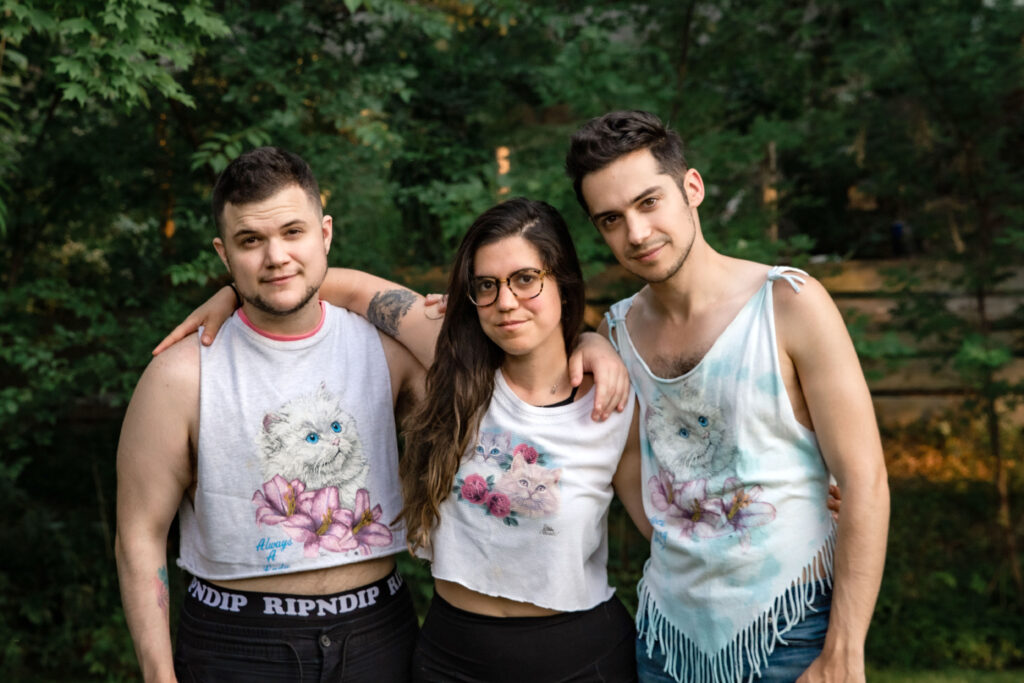
How does your own family history influence your work/the way you document other people’s experiences and lives?
My family history hugely influences my work, mostly in the way I connect to others and where I find a feeling of “home.” I am the middle child of three queer kids. My older brother is gay and my younger brother is trans. They both came out before me and showed me that who you are is the only way to be. I am forever grateful to them for that. My dad has been exploring the identity of genderqueer, now that he has language that he didn’t have when he was growing up. He once said something like, “I think if I didn’t feel like I had to ‘be a boy’ growing up, things would’ve felt much better for me.” My mom is a fierce ally and fights for LGBTQ+ rights, along with other social justice issues, in every space she occupies. My family is everything to me!
I can’t remember a time when societal expectations of gender and identity weren’t questioned within my household. From the toys and games my brothers played with, to their personal styles and expression, it felt like someone was always explaining themselves to another person who didn’t understand — whether it was a friend who didn’t get why my older brother was my favorite person to play Barbies with, or to a server who misgendered one of my brothers at a restaurant. In addition to that, we were raised observantly Jewish and also very progressive, and grew up in Fort Worth, Texas — a place where many people are Christian and conservative. We were constantly explaining ourselves. It was something that was both frustrating and also made me feel unique, and closer to my family. When I moved out of Texas and started meeting other queer people, I felt a sense of home that always remains when I’m in queer community. I like to bring that sense of connection and community to my photoshoots.
Who is your photography for? What do you want it to convey? Whose stories are you wanting to tell?
My photography is for many, but is focused on being a space for queer people, to find connection with those in the photographs, maybe a new friend, maybe someone to collaborate with on a future project. For people to see themselves and others in a space of authenticity, art, and joy. I want to share the story of anyone who has a story to share. My goal is always to amplify queer folks and expand visibility, especially those who have stories different from those we hear most often.
My photography is also for folks who do not identify as queer, but who are connected to queerness through friends, family, and community; and for folks who are excited and eager to see, support, learn from, and amplify those whose experiences are different from their own. I don’t exclusively photograph queer people, but it is important to me that those I photograph align with my values and my work in general.
For you, what makes a good photograph?
I don’t think there’s necessarily a “good” or “bad” photograph, but I get really excited about photos that creatively utilize natural light, photos that are taken in front of really colorful backgrounds, anything involving vintage (whether it’s clothing or decor or architecture)…but most importantly, I get excited about photographs of people who are excited to be in them! It’s also happened less since COVID, but I love photographing an event with great energy. Everything unfolds so naturally.
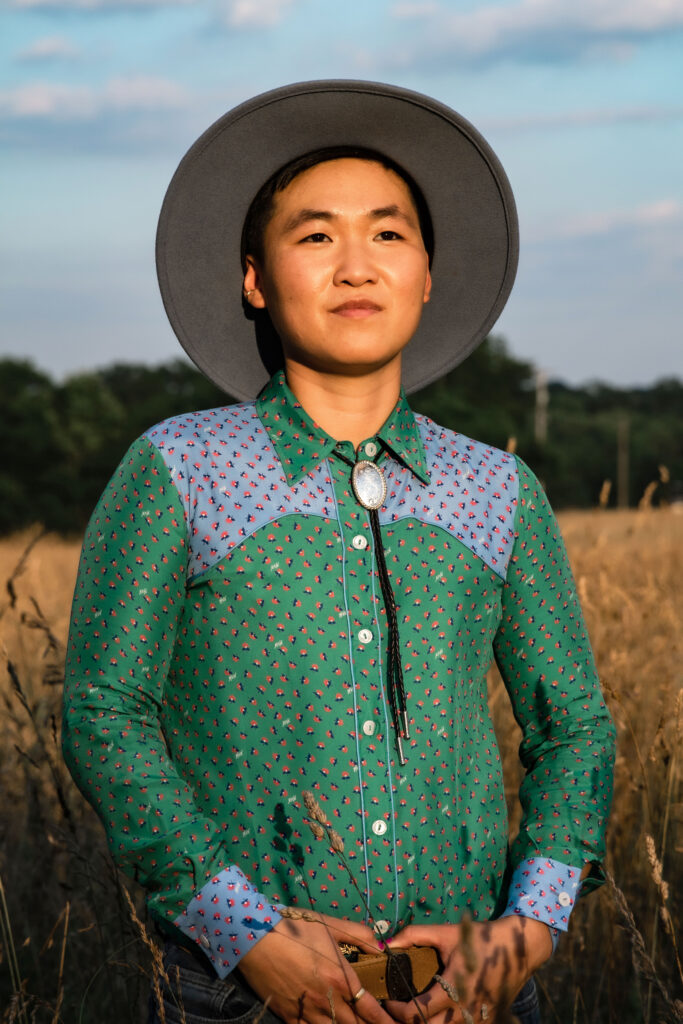
What about your work is specific to Nashville or Middle Tennessee or the South?
I’ve lived in Nashville for 10 years, so while I didn’t spend my childhood growing up here, I spent almost all of my 20s finding myself here. The connections I’ve made over the past 10 years, many of which have come and gone, are very important to me. I’ve been fortunate to document several queer-centered events in the past few years and hope to keep doing so. I often think about what it will be like to look back on these photos in a decade or so — creating queer Nashville history for our future selves, documenting the journeys and experiences of beautiful people in our community.
It can be difficult living as a queer person in Nashville, especially for BIPOC and trans folks. I know that through my white, cis lens, I’ll never be able to truly understand that. It is important to me to feature folks who represent all different intersections of queerness and other identities.
It’s also important to me to create projects that showcase the Nashville community. A recent one was called Nashville Businesses Who Stand with the Trans Community, which gave business owners the opportunity to show support for trans folks and employees during a period of strong anti-trans legislation that specifically targeted businesses. I hope that projects like these bring us together in a visual, tangible, and creative way.
Talk a little bit about your creative process. What inspires you? How is it executed?
I like to think of my photoshoots as “creative hangs.” Casual, go-with-the-flow, free of pressure and expectation. I like to chat and connect with those I’m photographing during the process. It’s important to allow for time for both myself and the person I’m photographing to warm up and get in the groove together, and we always find it. When I get excited by a shot, I’m very vocal about it, and it tends to hype people up!
(A lot about my inspirations can be found in other answers!)
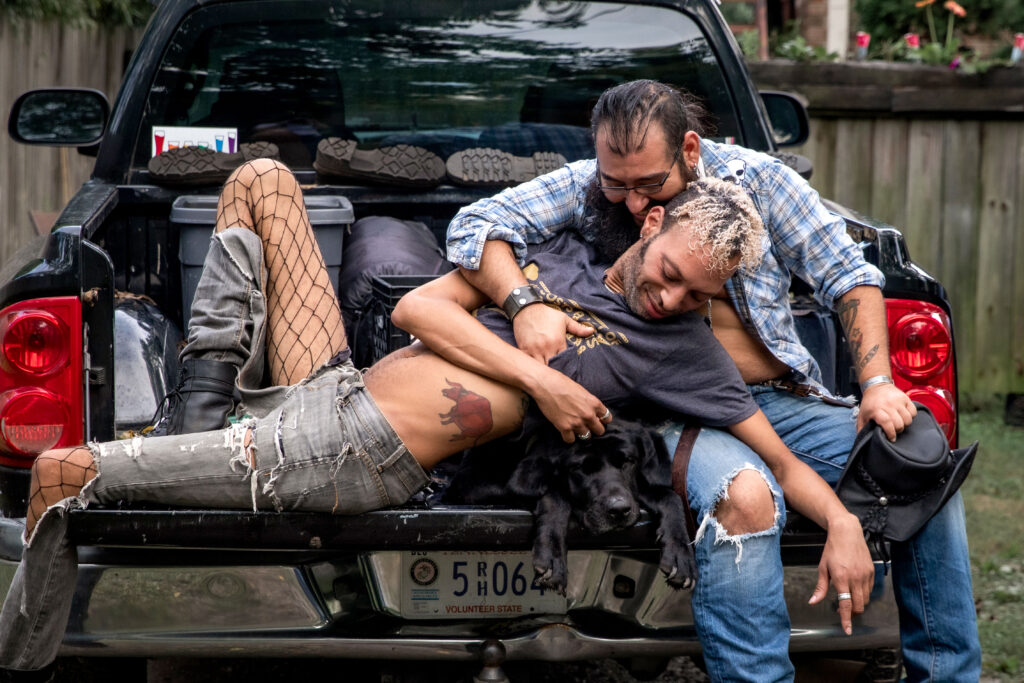
Has the pandemic or any other social justice movements (BLM, for example) shifted or influenced your approach to documenting and understanding your images?
Absolutely! The beginning of the pandemic sparked the idea for my favorite project, Nashville Queers in Quarantine, where I photographed queer folks all across Nashville from a distance outside of their homes, and included a feature about each person. Queers in Quarantine inspired my love of photo projects, which I hope to continue as long as I keep photographing. To me, they are a really beautiful way to connect to, amplify, and create with other folks on a more personal and detailed level.
The rise of the awareness of the BLM movement in the summer of 2020 increased my acknowledgment of my privilege as a white photographer, and the limits I have in viewing the world through a white lens. It is a process that I will forever be acknowledging and working on, and it’s a priority for me to amplify queer BIPOC voices through photography.
I also enjoy the community aspect that comes with pairing photography with amplifying others’ crowdfunding needs. That’s also something I’ve focused more on for the past couple of years. We can have each other’s backs!
Anything else you’d like to share?
I am always open to working with new and returning folks! Please reach out via email at emilyaprilallen@gmail.com or through Instagram DM @emdashphotos to learn how to work together. My website emdasphotos.com is newly updated and ready for perusal!
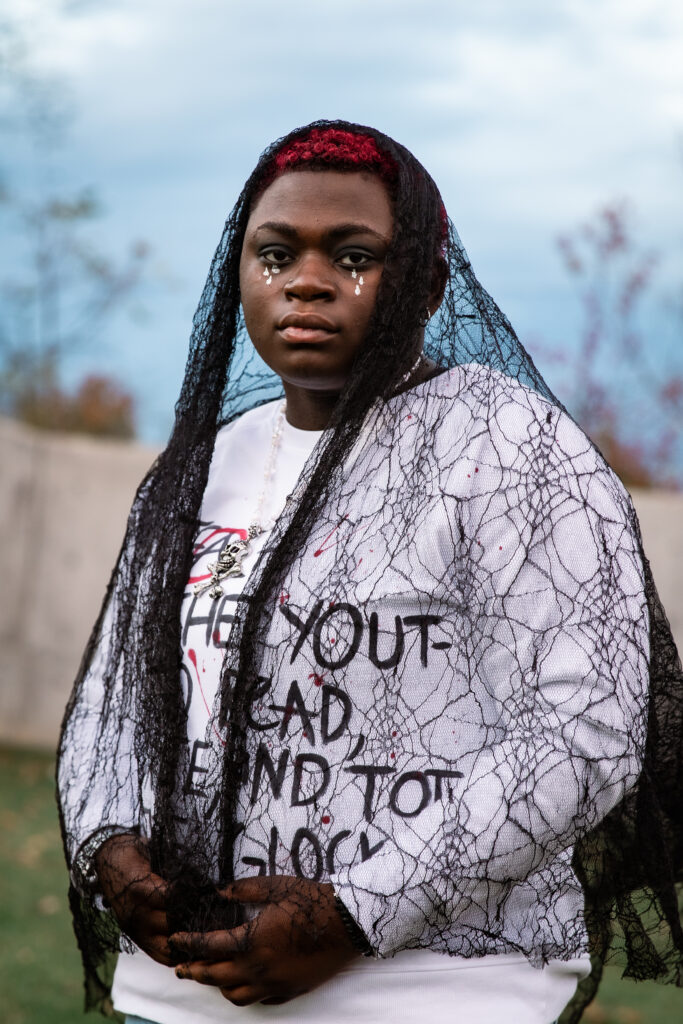
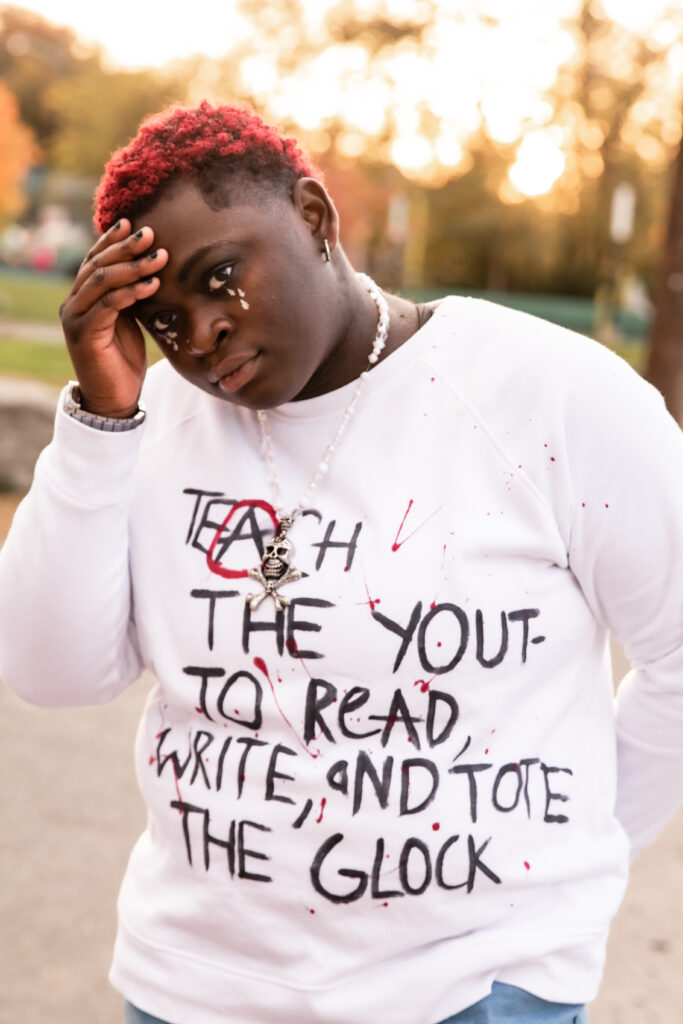
(Cover and theme page photos of TC for the Queer Artists issue are also taken by Emily April Allen.)

